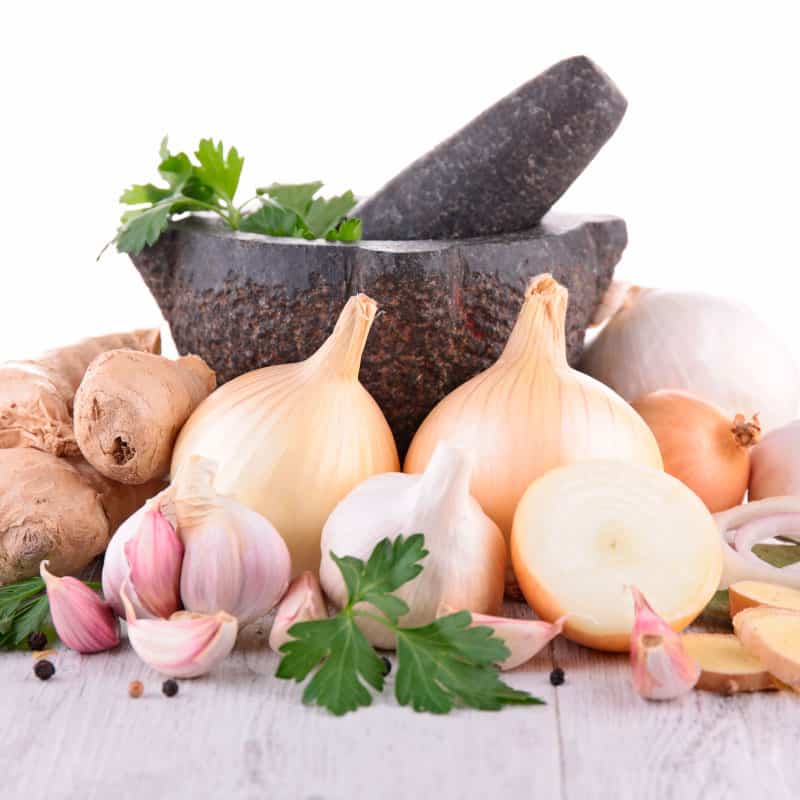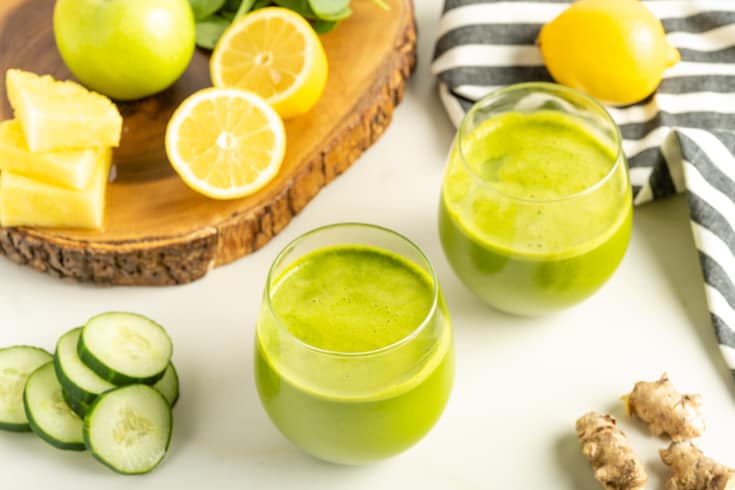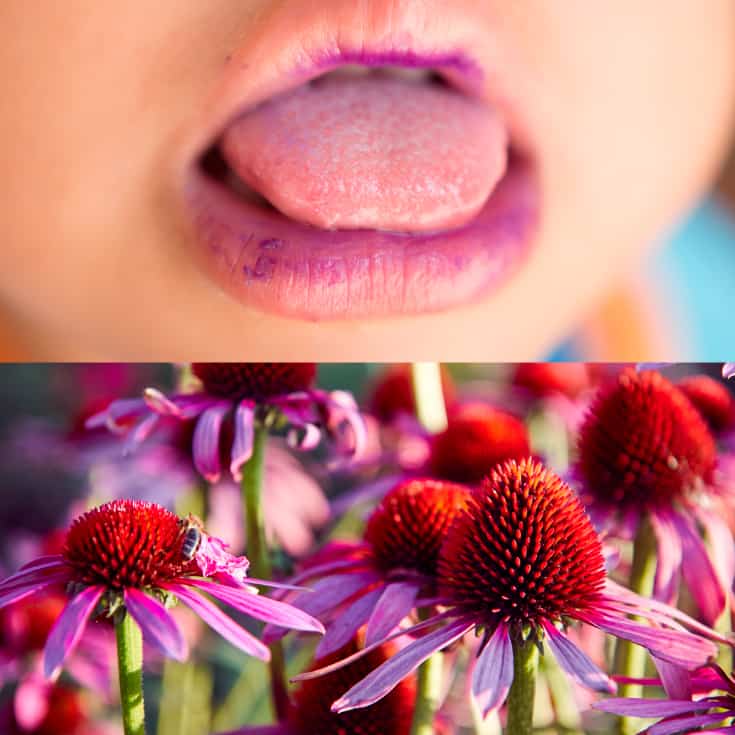This Dr. Axe content is medically reviewed or fact checked to ensure factually accurate information.
With strict editorial sourcing guidelines, we only link to academic research institutions, reputable media sites and, when research is available, medically peer-reviewed studies. Note that the numbers in parentheses (1, 2, etc.) are clickable links to these studies.
The information in our articles is NOT intended to replace a one-on-one relationship with a qualified health care professional and is not intended as medical advice.
This article is based on scientific evidence, written by experts and fact checked by our trained editorial staff. Note that the numbers in parentheses (1, 2, etc.) are clickable links to medically peer-reviewed studies.
Our team includes licensed nutritionists and dietitians, certified health education specialists, as well as certified strength and conditioning specialists, personal trainers and corrective exercise specialists. Our team aims to be not only thorough with its research, but also objective and unbiased.
The information in our articles is NOT intended to replace a one-on-one relationship with a qualified health care professional and is not intended as medical advice.
7 Ways to Help Improve Glaucoma Symptoms
June 13, 2019

Glaucoma is one of the leading causes of visual impairment and severe irreversible blindness in the world, along with macular degeneration. In the United States, glaucoma affects more than 3 million Americans, and globally, it’s estimated to cause visual impairment for 5.7 million people. The scary thing is that many people, half by some estimates, don’t even know that they have the disease.
Medical treatment is essential to prevent further damage from glaucoma, but there are also certain foods and supplements that can help to improve symptoms and fight eye damage. In fact, the use of complementary and alternative medicine in glaucoma has received interest from ophthalmologists and patients.
One thing is for sure — it’s a very serious condition that can lead to permanent vision loss if left untreated.
What is Glaucoma?
Glaucoma is the second leading cause of blindness in the world, accounting for 9–12 percent of all blindness cases in the United States. African Americans are 15 times more likely to lose vision from glaucoma than caucasians. People over 60 are also considered high-risk.
When left untreated, glaucoma can cause blindness, and sadly, about 10 percent of people who are receiving proper treatment will still develop irreversible vision loss. Once vision is lost from glaucoma, it cannot be regained, which is why early detection and proper treatment is vital.
Types of Glaucoma
There are several types of glaucoma, with the two most common being open-angle and angle-closure glaucoma. Both involve an increase of intraocular pressure within the eye. Here’s a breakdown of those types, plus other less common forms of glaucoma:
- Primary open-angle glaucoma: This is the most common form, accounting for about 90 percent of all cases. It’s also referred to as primary or chronic glaucoma. It’s caused by the slow clogging of the drainage canals, which results in increased eye pressure. Open-angle glaucoma develops slowly and is known to be a lifelong condition. With open-angle glaucoma, there’s a wide and open angle between the iris and cornea. According to research published in American Family Physician, risk factors for this type of glaucoma include older age, black race, Hispanic origin, family history of glaucoma and diabetes.
- Primary angle-closure glaucoma: This is a less common form. With angle-closure glaucoma, blocked drainage canals cause a sudden rise in intraocular pressure. With this type of glaucoma, there’s a narrow angle between the iris and cornea. Angle-closure glaucoma demands immediate medical attention and typically, the symptoms are very noticeable. Risk factors for this type of glaucoma include older age, Asian descent and female sex.
- Normal-tension glaucoma: With normal-tension glaucoma, eye pressure isn’t very high, but the optic nerve is damaged.
- Congenital (childhood) glaucoma: With this type of glaucoma, the eye’s drainage canals haven’t developed correctly during the prenatal period. This is a rare, likely inherited condition that’s often treated with surgery.
Symptoms
One of the scariest things about glaucoma is that there may be no symptoms to warn you of its development and progression. In fact, the most common type of glaucoma develops slowly and can go on for years before a person notices.
With open-angle or chronic glaucoma, there’s no pain with the increased eye pressure. For some people, it’s hard to even notice the peripheral or side vision loss, and it only becomes noticeable when they’ve experienced significant vision loss already. Vision sharpness is typically maintained until late in the disease progression.
Because there aren’t obvious glaucoma symptoms, it’s so important to undergo routine eye exams. Your doctor will measure the intraocular pressure, test for optic nerve damage, check for vision loss, measure your corneal thickness and inspect the angle of drainage. All of these factors will help him or her diagnose glaucoma and begin treatment immediately.
Causes and Prevention
Glaucoma is caused by the build-up of fluid in the eye that puts pressure on the optic nerve, retina and lens. This pressure, which is referred to as intraocular pressure, can permanently damage the eye if it’s not treated.
The cause is the accumulation of waste related to aging, high blood pressure, prescription drugs, eye injury or other eye-related illnesses. Studies show that reducing intraocular pressure significantly delays glaucoma progression by improving optic disc damage and visual field loss.
The groups of people at the highest risk for developing glaucoma include the following:
- African Americans
- People over 60 years old
- Hispanics over 60
- Asians
- Family history of glaucoma
- People using steroids
- People with eye injuries (such as those that bruise or penetrate the eye)
- Hypertension
- Obesity
- Nearsightedness
The American Academy of Ophthalmology recommends that adults get regular eye exams, especially as they age and if they have other risk factors. Early identification allows for immediate treatment and lowers morbidity of the disease.
Conventional Treatment
Conventional glaucoma treatment includes prescription eye drops, medications, laser therapy and surgery in order to slow visual field loss by lowering intraocular pressure.
Conventional treatment will typically begin with eye drop medications that are made with drugs to reduce eye pressure and the production of fluid in the eye. Prostaglandins and beta blockers are two examples of prescription eye drops. If the eye drops do not work to reduce pressure, an oral medication may be prescribed.
Laser therapy is also sometimes used to open clogged channels in the eye, and surgery may be performed to drain excess fluid from the eye and reduce pressure.
7 Glaucoma Natural Remedies
1. Antioxidant Foods
Eating nutrient-rich antioxidant foods will help to fight free radicals that damage the eyes and worsen glaucoma symptoms. This includes fruits and veggies with high vitamin A and C content, including collard greens, cabbage, green beans, kale, spinach and celery.
More specific foods to include in your diet in order to improve symptoms include:
- Foods high in carotenoids: Studies show that dietary intake of vitamin A and C show a beneficial association with glaucoma. Orange and yellow fruits and vegetables are critical to provide sufficient vitamin A to keep eyes healthy. Some foods highest in beta carotene include carrots, pumpkin, sweet potatoes, cantaloupe and mango.
- Fresh fruit and vegetable juices: Juices will provide essential vitamins, minerals and antioxidants to keep eyes healthy. It’s best to prepare your own juices or get them made fresh. Many bottled juices contain added sugars.
- Blueberries and cherries: These two super fruits contain anthocyanin, a type of flavonoid that can help fight free radicals that damage eyes.
- Wild-caught fish: EPA/DHA fatty acids and astaxanthin (a type of carotenoid and powerful antioxidant) found in wild-caught salmon improve eye health.
- Brewer’s yeast: The chromium present in brewer’s yeast has been shown to benefit people with glaucoma.
In addition to eating plenty of antioxidant, nutrient-dense foods, there are also foods to avoid when trying to improve symptoms of glaucoma. Be sure to cut the following foods and beverages out of your diet:
- Food allergy triggers: Foods that commonly cause allergy symptoms, like those containing gluten and conventional dairy, may be responsible for putting pressure on the eyes. Avoid any foods that cause an adverse reaction.
- Caffeine: Drinking too much coffee and other sources of caffeine may reduce blood flow to the eyes, so limit or cut out these beverages.
- Alcohol: Liver toxicity can lead to eye problems, therefore it is best to avoid excessive alcohol consumption. Stick to just a few drinks a week or less.
- Sugar: Consuming foods high in sugar can cause premature aging of the eyes and increase the risk of diabetes and glaucoma. It’s important to avoid any foods or drinks that contain added sugars. Even artificial sugars are problematic and should be avoided.
2. Bilberry
Bilberry is a plant that contains a number of phenolic compounds, including flavonols, quercetin and phenolic acids. It also contains anthocyanin, a powerful antioxidant that has shown to enhance eye health and vision.
Although research pertaining to glaucoma treatment or prevention is limited, there is evidence that bilberry may improve night vision and recovery time from glare. A study published in Molecular Vision also shows that compounds found in bilberry may induce antioxidant defense pathways.
You can find bilberry supplements in capsule, powder or extract forms. To improve glaucoma symptoms, take 160 milligrams of bilberry twice daily.
3. Astaxanthin
Astaxanthin a potent carotenoid that can help prevent retinal damage. It’s found naturally in red-orange colored foods, like algae and salmon, and it’s also available in supplement form. Studies show that astaxanthin can help to improve the health of your eyes and maintain vision. It can also help to protect your eyes from retinal cell damage that’s caused by oxidative stress and reduce ocular inflammation.
To improve the health of your eyes and glaucoma symptoms, take 2 milligrams of astaxanthin per day. Opt for a natural extract from a reputable company and, on top of that, add wild-caught salmon to your diet.
4. Fish Oil
Studies indicate that fish oil has been shown to reverse age-related eye disorders. When researchers at the University of Melbourne evaluated the effects of oral omega-3 supplementation for glaucoma, they found that taking omega-3s for three months significantly reduced intraocular pressure.
And another study, published in the International Journal of Ophthalmology, suggests that cod liver oil, as a combination of vitamin A and omega-3 fatty acids, is beneficial for the treatment of glaucoma because it decreases intraocular pressure, increases ocular blood flow, improves optic neuroprotective function and prevents oxidative damage that contributes to the progression of glaucoma.
To help prevent and fight glaucoma, aim for consuming at least 600 milligrams of EPA and 400 milligrams DHA per day. A fish oil supplement that also contains vitamin A may contribute to its eye health benefits.
5. CoQ10
CoQ10 (or Coenzyme Q10) is an antioxidant that can help prevent free radical damage to the eyes. In studies, it has been shown to slow or reverse the pathological changes that are typical of glaucoma and to possess potential neuroprotective effects.
According to a 2019 review of clinical evidence published in Neural Regeneration Research, CoQ10 protects the neuroretinal cells from oxidative damage, especially when combined with vitamin E eye drops. Researchers concluded that CoQ10 is a promising natural remedy for glaucoma, as well as other neurodegenerative conditions.
Try taking 300 milligrams per day of CoQ10 to prevent or fight symptoms. As the studies indicate, this may be even more effective in combination with vitamin E eye drops.
6. Magnesium
Magnesium has been shown to relax the blood vessel walls and improve blood flow. In studies, it has also exhibited neuroprotective effects by protecting the cells against oxidative stress and apoptosis.
According to a review published in International Scholarly Research Notices, “Both improvement in ocular blood flow and prevention of ganglion cell loss would make magnesium a good candidate for glaucoma management.”
Take about 250 milligrams of magnesium twice daily to improve glaucoma and cell function.
7. Essential Oils
Although you can’t put essential oils directly into your eyes, applying a small amount topically around your eyes may be beneficial.
Frankincense oil has been demonstrated to improve eyesight and blood flow, while helichrysum oil may help to improve vision and support nerve tissue. Cypress essential oil may also benefit eye health because of its ability to improve circulation.
You can apply 3 drops of any of these essential oils diluted in a carrier oil twice daily on your cheeks and lateral eye area, but do not put them directly into your eyes.
Precautions
Glaucoma is a serious condition affecting the eyes and your vision. It needs to be treated medically immediately after diagnosis. Although these natural remedies have proven to be beneficial in studies, it’s essential that you seek prompt professional care in order to avoid permanent vision loss. Before starting any natural remedy at home, consult with your healthcare provider.
Final Thoughts
- Glaucoma is the second leading cause of blindness in the world, affecting about 5.7 million people worldwide.
- When left untreated, it can cause blindness, and even when treated, about 10 percent of people will still develop irreversible vision loss.
- The key to treating is early detection. Because there aren’t usually noticeable symptoms, it’s important to get a routine eye exam, especially if you are African American and/or over the age of 60.
- Research suggests that complementary and alternative medicine may help to improve symptoms. Eating antioxidant foods daily is very important and using natural supplements like bilberry, fish oil, CoQ10 and magnesium may also benefit glaucoma.









